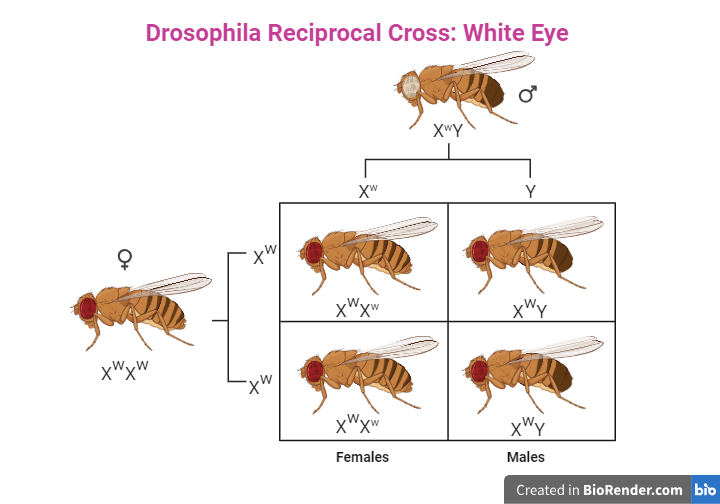Introduction:
The tendency of genes to study together during inheritance and to retain their parental combination even in the offspring, because of the genes being located relatively close to each other, in the same chromosome is called linkage. The genes located on the same chromosome and inherited together are know as linked genes. Linked genes are separated from each other by the process of crossing over and causes genetical variations due to the recombination of genes.
Linkage is described as a close physical link between two loci on a chromosome that prevents independent assortment.
Development of concept of linkage:
Chromosome theory of heredity
Sutton and Boveri discovered that genes are located on chromosomes in 1902. In addition, the chromosomal hypothesis of inheritance (heredity) provides a physical basis for heredity.
Coupling and Repulsion hypothesis
Bateson and Punnet (1905-1908) proposed the coupling and repulsion hypothesis to explain the unexpected F2 result of dihybrid cross between a homozygous sweat pea plant (Lathyrus odoratus) having dominant alleles for blue flower (RR) and long pollen grains (R0R0) with another homozygous double recessive plant with the red flowers (rr) and round pollen grains (r0r0). When the test crossed a heterozygous blue long pollen plant with double recessive parent, instead of getting 1:1:1:1 test cross ratios, they received 7:1:1:7 ratio.
Coupling and repulsion hypotheses were early concepts proposed to explain the patterns of inheritance observed in genetic studies. These concepts helped pave the way for a deeper understanding of genetic linkage and the role of crossing over in breaking the linkages between genes on homologous chromosomes.
Morgan’s Experiments
Thomas Hunt Morgan’s experiments with the fruit fly Drosophila melanogaster played a pivotal role in establishing the concept of genetic linkage and furthering our understanding of inheritance patterns. Morgan’s work, conducted in the early 20th century, provided key insights into the connection between genes, chromosomes, and the phenomenon of crossing over.
Morgan worked on Drosophila melanogaster to analyse the behaviour of the two alleles of a fruit fly eye colour gene. From this work he discovered sex linkage.
Morgan experiment: When he crossed a white eyed (mutant) male to a normal (wild) red eyed female, in the F1 generation all the males and females were red eyed.
When F1 generation red eyed female was crossed to a red eyed male, in the F2 generation all the females and 50% of males were red eyed and remaining 50% males were white eyed. This type of inheritance of a character from grandfather to grandson is called crisscross inheritance.

Fig: Drosophila Eye Reciprocal Cross
In reciprocal cross, in which a white eyed female was crossed to a red eyed male, the
F1 resultant male offspring had white eyes while the female offspring had red eyed. This proves that the allele responsible for the white eye is sex linked and recessive
He also determined that the likelihood of recombination is proportional to the strength of the linkage. Some genes have high linkage and low recombination, while others have low linkage and high recombination. The frequency of related genes also indicates the potential of specific features appearing in the future generation. He found that the closer the genes, the stronger the relationship, and vice versa. He also found the Drosophila white eye mutation. He selects Droshophila to investigate the sex-linked genes. He claims that male and female flies inherit the mutation differently. He also established that the eye color gene is found on the X chromosome. This explains gene recombination as well.
Types:
On the basis of crossing over
Complete linkage
Due to the lack of cross-over, genes on the same chromosome are inherited together over generations. It is uncommon; however, it has been observed in male Drosophila.
Incomplete linkage
Crossover causes genes on the same chromosome to separate. In addition to the parental kinds, they create recombinant progeny.
On the basis of chromosome Involved
Autosomal inheritance
It refers to the linkage of genes found in the autosome (as opposed to the sex chromosomes).
Allosomal/Sex relationship
It refers to the linking of genes on either the “X” or “Y” chromosomes.
On the basis of gene involved
The coupling phase
The presence of dominant and recessive alleles on the same chromosomes indicates a coupling phase.
The repulsive phase
When dominant alleles of the same gene are connected with recessive alleles of other genes on the same chromosome, repulsion occurs.
Significances:
- It reduces the chances of formation of new combinations of genes in gametes.
- It aids in the retention of parental, racial, and particular features.
- It is also beneficial in maintaining the good character of newly generated varieties.
- Linkage is very critical in determining the nature and scope of hybridization.
